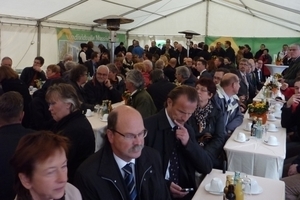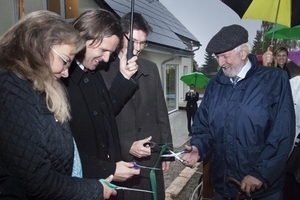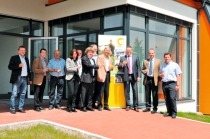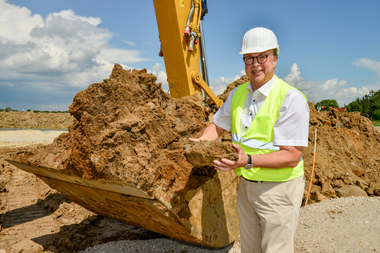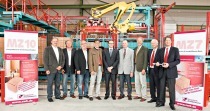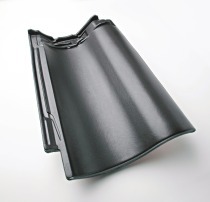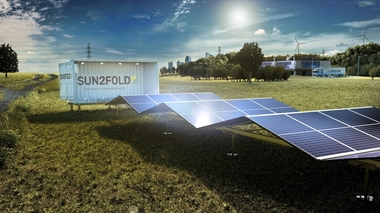Handover of the keys to the first energy self-sufficient homes
The fact that new technologies can be used to increase prosperity and quality of life while protecting environment and resources at the same time was stressed by the renowned climate researcher Prof. Dr Ernst Ulrich von Weizsäcker on 11 October in Freiberg. There he attended the ceremonial handover of the keys to two energy self-sufficient homes. The scientist highlighted the special significance of the project: intelligent self-sufficiency with heat and power from sunlight. The two-year scientific monitoring project by Freiberg University of Mining and Technology (BAF) also commenced on 11 October.
Fired clay: perfect for walls and roofs
Responsible for this model project is the solar expert Prof. Timo Leukefeld, who will move into one of the two houses with his family. His energy concept is based on self-sufficiency with heat and power from sunlight as well as low consumption thanks to an efficient thermal insulating building envelope. For the external walls of the Freiberg houses, a brick from the cooperation partner Wienerberger was used that is filled with the insulation material perlite. With coordinated complementary products, an almost thermal-bridge-free and economic wall structure was constructed. Wienerberger also supplied the roof covering. The complete building envelopes – from cellar to roof – allow hardly any heat loss and also boast sustainability as a key property.
The buildings should cover their demand for heat and hot water over the entire year based on the thermal solar installation. The solar heat is stored in a long-term solar storage unit, which is filled with 9 300 litres of water, over months. 65% of the annual heat requirement is met in this way. The primary energy demand at 7 kWh/m2/year is 90% below the requirements of EnEV Energy Saving Ordinance 2014 for newbuilds and 80% below the demand of a typical passive house. For the remaining heat requirement, only a few solid cubic metres of wood are needed. In addition to the collectors, a 58 m2 photovoltaic system is installed. The special feature here: the excess solar power generated is buffered in an electrical energy storage unit (battery). The energy is used to operate all domestic appliances, powers the lighting and can be used flexibly, for example, to charge an electric car.
Relying on solar heat
The road to intelligent self sufficiency does not go just via photovoltaic systems, but is also based on solar heat – Leukefeld is convinced of that and he has begun gathering the evidence for this in the field with Freiberg University of Mining and Technology. Objective of the two-year monitoring scheme is to record the user behaviour, in order to contribute to the optimization of the energy consumption and push ahead with further improvements to the technology concept. Prof. Dr Ulrich Gross from BAF impressed the many guests at the inauguration with figures from the extensive monitoring programme: up to 400 measurement units are installed in the two houses, including 100 temperature sensors and 50 power meters.
The stricter EU directive on the total energy efficiency of buildings prescribes that by 2021 all newbuilds must be built approximately to the level of zero-energy houses. Newbuilds in the public sector must meet these requirements two years earlier. “The energy self-sufficient detached houses in Freiberg will provide important impetus for this development and point to a possible way forward. Wienerberger is part of this with a string of cost- and energy-efficient building material solutions made of fired clay that prove their sustainability”, stressed Ralf Schwung, Managing Director at Wienerberger.

